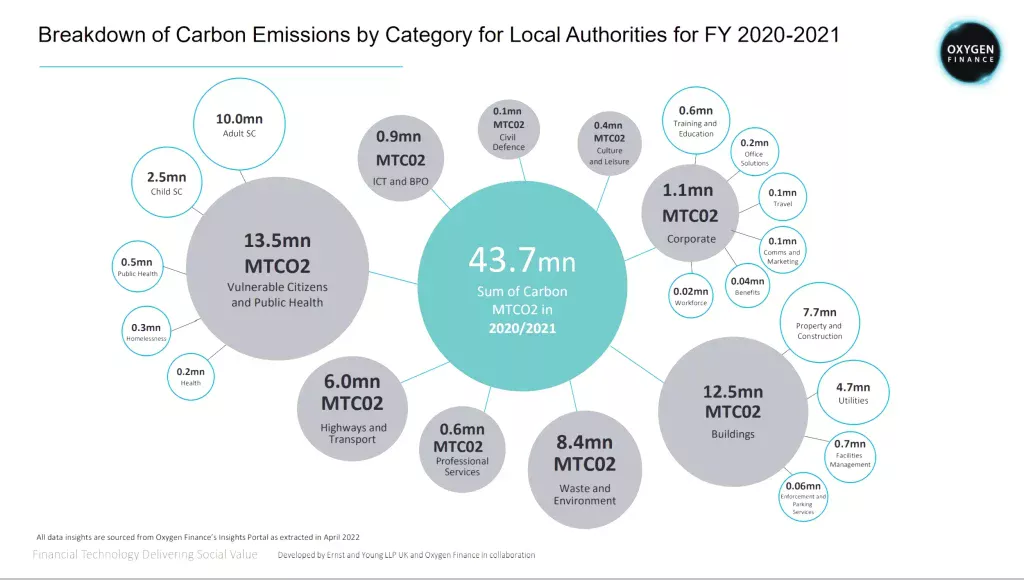World Supply Chain Day: councils' supply chains responsible for 43.7M tonnes of CO2
New data released by Oxygen Finance provides visibility of Local Authority supply chain carbon emissions by category of spend for the first time. This will allow councils to focus carbon reduction efforts in the areas of biggest impact.
Local Authority supply chains are responsible for over 10% of UK carbon emissions which equates to 43,666,540 tonnes of CO2 emitted during year 2020/2021 based on published spend data by all English authorities and a proportion of those in Wales – a figure close to the entire CO2 emissions from countries such as Sweden and Norway.

Typically, 96% of carbon emissions from local councils comes from their supply chain, with only 2% coming from the council's own operations, and another 2% from indirect emissions from purchased energy.
Over 300 councils in the UK have declared a climate emergency with the majority pledging to go well above the minimum requirements set by the government and pledging to achieve net zero by 2030.
Yet despite almost every council declaring a climate emergency, supply chain emissions have continued to rise with a 14% increase in emissions over the past five years to 2021.
The new data is taken from Oxygen Finance's Insights Carbon product; a tool which allows local authorities and other public sector bodies to understand their Scope 3 carbon emissions. The tool provides emissions data for their supply chain, primarily by category and showing indicative data for individual suppliers. The product is designed to provide contracting authorities with a strategic view of their overall emissions in order to identify the biggest contributors, so they can prioritise their carbon reduction activities as they address the climate emergency.
Rebecca Dyer, Carbon Product Manager at Oxygen Finance, comments: "For the first time, local authorities can see the scale of carbon emissions within their supply chain and take action to deliver the net zero commitments they've made.
"Until now, the scale of these emissions hasn't been visible, and as a result authorities have tended to focus efforts on emissions from direct operations and indirect emissions from energy. This data presents local authorities with a real opportunity to work collaboratively with suppliers and other public bodies to act where it will have the greatest impact."
Oxygen Finance Insights not only provides local authorities with visibility of carbon emissions held within their supply chain, but also how much they're spending with each supplier. Public bodies can make informed decisions to ensure that future spend is considered in terms of quality, value, and now emissions.





